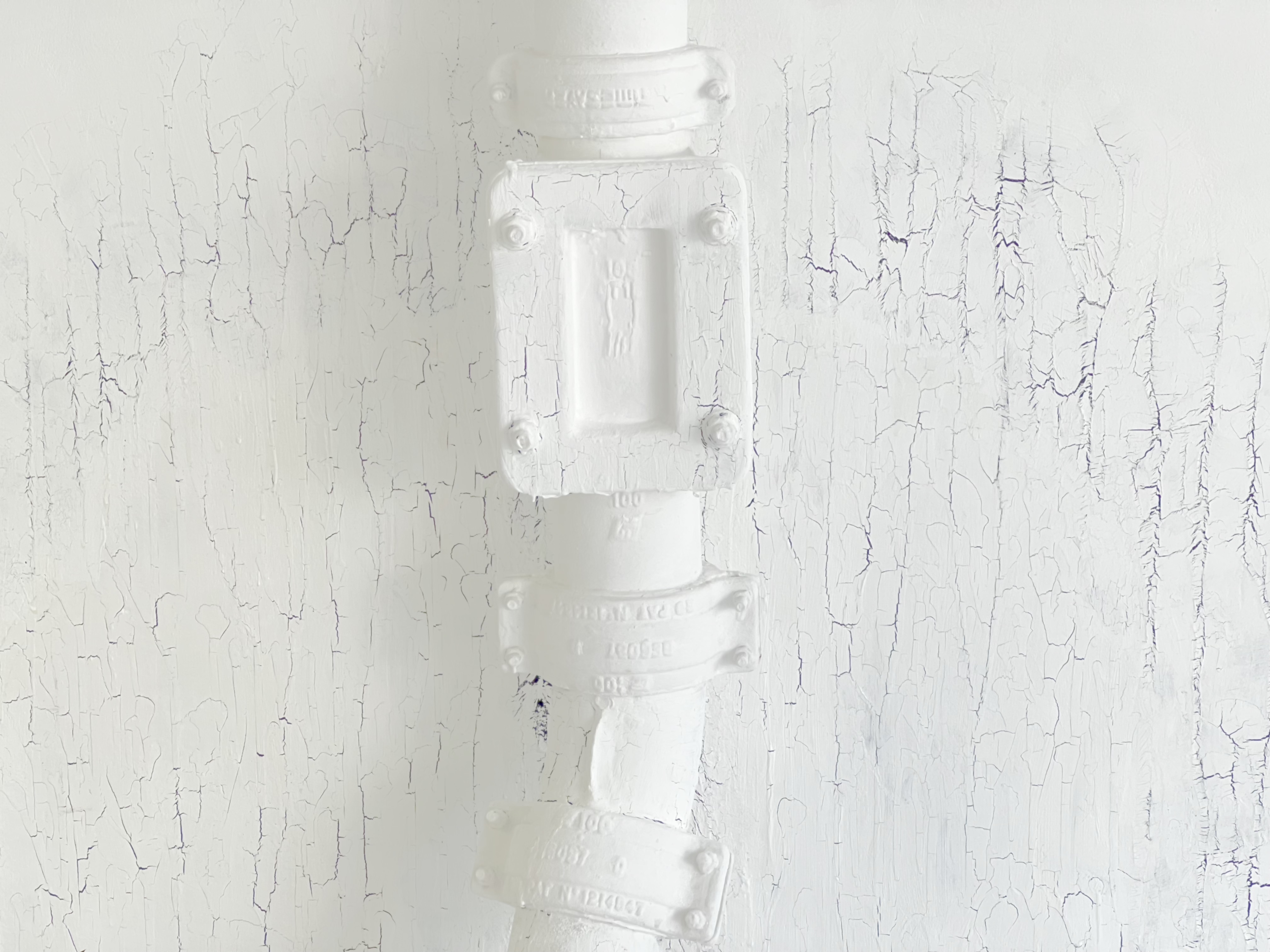
SCARRING
On-site Evolving Installation
May 2025
Nella Piatek x Andrea Cheng
Roman Road was created during the Ethereal Maison Residency, London, UK
On-site Evolving Installation
May 2025
Nella Piatek x Andrea Cheng
Roman Road was created during the Ethereal Maison Residency, London, UK
Scarring is a site-specific evolving process that uses the act of scarring as both method and metaphor; an intervention that reclaims what is often hidden, dismissed, or pathologised. Centring a waste pipe as subject and collaborator, the work explores its presence as a scar: a visible glitch in architectural systems that speaks to histories of erasure, marginalisation, and resilience.
Drawing from Object-Oriented Ontology, Cyborg Theory, and Glitch Feminism, Scarring reframes the glitch not as failure, but as continuity—where damage becomes form and healing becomes assertion. The pipe’s identity as both scar and glitch invites us to question whether disruption lies in the object itself or in our perception of it. Like bodily scars, the pipe is an essential eyesore; an inevitable, visible trace of survival.
Drawing from Object-Oriented Ontology, Cyborg Theory, and Glitch Feminism, Scarring reframes the glitch not as failure, but as continuity—where damage becomes form and healing becomes assertion. The pipe’s identity as both scar and glitch invites us to question whether disruption lies in the object itself or in our perception of it. Like bodily scars, the pipe is an essential eyesore; an inevitable, visible trace of survival.

Scarring is a site-specific, evolving process that mobilises the concept of the scar as both a material intervention and a methodological proposition. Grounded in the theoretical frameworks of Cyborg Theory, Object Oriented Ontology, and Glitch Feminism, the work repositions the scar, not as a closed wound or symbol of trauma, but as an active, generative force. Central to the project is a previously concealed waste pipe, now exposed and recast as a collaborator in the work. This pipe becomes the scar: not imposed upon space, but emerging from within it; claiming visibility, function, and a history of suppressed presence.
Rather than treating infrastructure as neutral or invisible, Scarring insists on its agency. The pipe is no longer background; it is a glitch within architectural logic, a rupture that challenges aesthetic conventions and social norms around what is allowed to be seen. The scar becomes a way of marking space, but also a strategy of resistance, similar to how Legacy Russell frames the glitch as a site of power for marginalised bodies within dominant systems. Here, the glitch is not a breakdown but a bridge, a site of continuity through disruption.
Through iterative engagement with the space, the project enacts scarring as a methodology of visibility and reclamation. It interrogates the tension between what is naturalised as part of a building’s function and what is intentionally hidden, drawing attention to how systems, both architectural and social, prioritise seamlessness over honesty, concealment over confrontation. In making the scar visible, Scarring invites ongoing re-evaluation of what is considered damage, what is allowed to remain, and what it means to inhabit an evolving space.